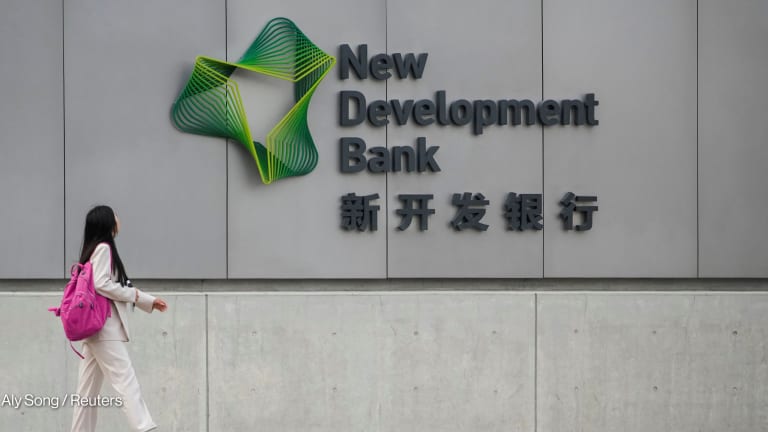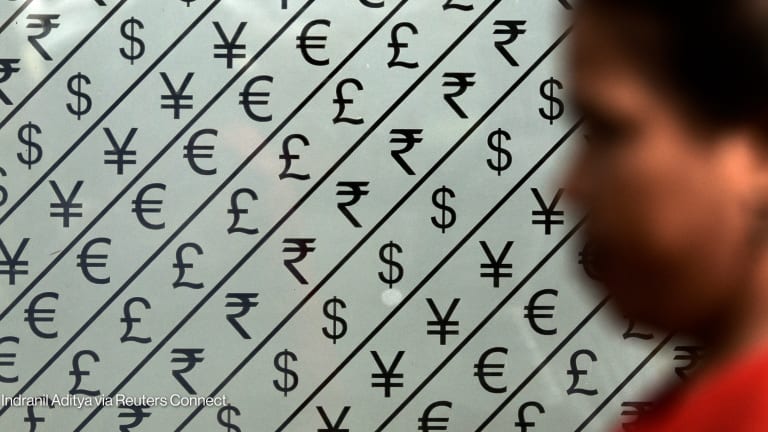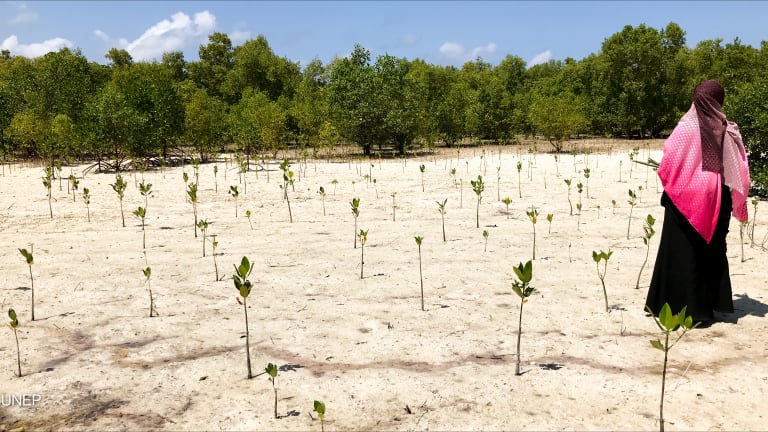Interactive: Exploring IDB's funding pipeline
Use Devex's monthly analysis and interactive visualization to anticipate upcoming opportunities with the Inter-American Development Bank.
The Inter-American Development Bank is one of the leading sources of development finance for Latin American and Caribbean countries, and its project pipeline is diligently monitored by stakeholders. To this end, IDB releases early-stage project information through its monthly operational summary, which lays out the status of loans and technical cooperation for projects in the bank’s official pipeline, helping potential bidders to identify and follow opportunities. Devex monitors trends in IDB’s project pipeline through the MOS — read on to learn more about what the document contains and how to navigate it, as well as how to use our monthly analysis and interactive visualization to easily understand the data. How to read the MOS The “processing stages” indicate the phases in IDB’s project cycle, serving as a reliable reference for tracking projects. The stages include: Identification — Begins with an agreement between IDB and a borrowing member country. During this phase, the operational strategy and investment priorities are determined based on the country’s needs. Often, the agreement is a result of the country programming process. The report contains a brief project profile consisting of a short description of objectives, and possible components and issues involving the operations. Consulting services opportunities, and in some cases procurement of goods and works, may also be specified in the MOS. This stage ends when the project profile is approved by the programming committee and added to IDB’s Operative Program. Preparation — Happens upon the approval of a second and enhanced project profile by the loan committee. Projects at this stage have gone through further development of the operation’s components, costs, issues, institutional framework for execution, and objectives. It ends with the borrower country’s presentation to support its application for a loan. At this stage, consulting services may be procured to assist in the studies preparation and project documentation. Analysis — The discussion stage between the bank and the borrowing country’s authorities regarding the contents of the documentation presented during the previous stage. This is when the preliminary negotiation of loan conditions takes place. IDB designates a project team tasked with analyzing environmental, financial, institutional, legal, socioeconomic, and technical aspects of the operation. It ends after a project report is submitted to the loan committee for review. The bank may seek out consulting services to support the team in conducting studies. A more detailed description of goods and equipment to be procured is also released during this phase. Final Approval — Consideration of the project report by the loan committee introduces this stage. Final negotiation on terms and conditions of the loan may also take place, if necessary. A loan proposal with a precise description of the project’s procurement opportunities is then submitted to the board of executive directors. Once approval is given, a loan contract will be signed by the bank and the borrowing country. The project execution may begin shortly after the approval, and general procurement notice may also be released. Using the processing stages as a guide, organizations and professionals can anticipate what opportunities may be available during upcoming stages. Since these operational summaries are supplemented with unique project numbers, changes can be monitored whenever the MOS report is added in Devex’s funding platform. Exploring IDB’s MOS on Devex Devex provides up-to-date and straightforward navigation of each project in the MOS, which are tagged as funding activity reports, including early-stage funding opportunity information. They are easily searchable and filterable using Devex’s funding search tool. Members can explore the MOS and perform their own analysis using this interactive visualization. The dashboard provides an aggregated data summary of the monthly operations, such as total number and amount of the pipelines, pipelines by country and by sector, and a complete list of the projects. Monthly MOS analysis We summarize and analyze the MOS data going back to 2019 for key insights. This article is updated regularly with the release of each new MOS document from IDB. Each analysis links to the Devex funding search, where Pro Funding members can see future intelligence published for that particular month. Check the 2020 project pipelines and 2019 project pipelines to see a more detailed monthly analysis for previous years. 2021 project pipelines September The project pipeline continues to decrease in volume, ending the third quarter with $12 billion for 101 projects in preparation, which includes nine, new projects worth $529 million. Brazil, Colombia, and Mexico are still the countries that received the highest share of funding since the beginning of the year, with a combined total of $5.9 billion in new funds this month. This includes the biggest project in preparation, which allots $700 million for sustainable growth and resilience in Colombia. August Funding allocation for all five projects worth $720 million this year in Chile were at the final approval stage and are ready for implementation — these projects started in January, focusing on the energy, public, and social services sectors. This was one of the factors that raised total IDB contribution to $12.4 billion for 98 projects this August, of which 92 are in preparation and six are approved by the bank’s board. Among the six, newly identified projects worth almost $2 billion, Brazil got 61% — $1.2 billion — to improve the productivity of the agricultural sector. This was followed by Guatemala for a social protection program worth $300 million, and the Dominican Republic for a $250 million program on sustainability in the power sector. July Compared to last June, there was a slight increase in IDB’s planned contributions, worth $13.3 billion for 105 projects in preparation and 18 approved projects. There were 13 new projects in the pipeline and Colombia was allocated the bulk of the funding — worth $901 million. This included funding for projects on sustainable growth, resilience, and implementation of environmentally responsible policies amounting to $600 million. Panama and Uruguay were second and third in terms of funding allocated, with $150 million and $136 million respectively. Belize also joined the list of countries funded by IDB for two new projects worth $23 million, focusing on finance and public sector management. June For this month, 115 projects worth $12.9 billion were added — 110 projects in preparation and five approved by the board. IDB added 11 newly identified programs this month worth $1.3 billion. Honduras got the biggest chunk of new funding at $445 million for two new projects, followed by El Salvador at $400 million for a project to alleviate the impact of national emergencies on public finances, and Peru at $200 million for a fiscal reform project. $800 million was allocated to two new projects related to finance, management, and administration; while public sector management and medical, health, and nutrition were allocated a total of $374 million for five new projects. The $400 million project in El Salvador was the biggest among the new projects. May One hundred and seventeen projects worth $15.6 billion were included in this month's operational summary — $14.3 billion came from the IDB while the source of the remaining planned funding is yet to be disclosed. Of these projects, 113 were in preparation, while the remaining four were approved. The bank reported 22 new identified projects this month, with a $2.5 billion contribution from the bank. Most of the funding went to project management — almost $1 billion for six projects — followed by finance and administration at $580 million for four projects, and agriculture, fisheries, and forestry at $230 million for the development of agricultural value chains, environmental regulations, and agrarian reform in Brazil. Mexico got the lion’s share of funding, worth $1.2 billion for four new programs, followed by Brazil at $757 million for seven programs, and Colombia at $150.9 million for two programs. The three countries are the top borrowers of IDB’s planned projects in the pipeline since the start of the year. The project for Public Management and Transparency for Competitiveness in Mexico is the biggest among the new projects. The $700 million program aims to promote post-pandemic economic recovery through institutional advancements. April The second quarter of the year started with a $12.9 billion allocation for 105 projects according to this month’s operational summary. Of this, 104 projects were in preparation. The Ceara State Integrated Violence Prevention and Reduction Program in Brazil was the only approved project according to the data, with a $52 million contribution from IDB. On the other hand, there were 14 new projects worth $1.4 billion added to the pipeline. Following the same trend as March, Brazil got the biggest chunk at $2.4 billion for 15 projects, followed by Mexico and Colombia with the same allocation and projects they had last month. Public sector management continues to be the most funded sector at $3.4 billion for 26 projects, followed by information and communications at $1.3 billion for five projects, and social services also at $1.3 billion for nine projects. The Business Innovation, SMEs Technological Modernization and Innovative Entrepreneurship Project in Peru was the largest new project worth $300 million. March From the $10.5 billion total MOS allocation last February, there was an insignificant increase in the March MOS, with a total of $11.7 billion for 97 projects — of which 96 projects were in the preparation stage and one project was approved. Meanwhile, 11 new projects worth $1.8 billion were also added, which implies a 75% increase in new projects from last month. Brazil remained the most funded country at $2.4 billion for 17 projects, followed by Mexico at $1.5 billion for two projects. Unlike the previous months, this time Colombia made it to the third position with $1.4 billion for 10 projects. Meanwhile, the allocation for regional projects — affecting several countries in the region — doubled compared to last month with $525 million for three projects. In terms of sectoral prioritization, public sector management maintained its top spot with $3 billion for 27 projects, followed by social services at $1.3 billion for nine projects, and information and communications at $1.2 billion for four projects. The Sustainable Growth and Resilience Program in Colombia was the biggest new project worth $600 million. The project aims to achieve sustainable growth by promoting environmentally-responsible public policies. February There was a slight decrease in this month’s MOS total allocation compared to January, amounting to $10.5 billion across 91 projects — 10 new projects worth almost $1 billion are added in the pipeline, 88 were in the preparation stage, and three were approved. Among the new projects, the Sustainable and Productive Recovery of MSMEs Project in Brazil was the most funded, with $250 million allocation from IDB. The project will finance MSMEs to promote employment and economic recovery. Brazil topped the list with almost $2.4 billion for 15 projects, followed by Mexico at $1.5 billion for two projects, and Argentina at $980 million for six projects. Two regional projects also received $225 million allocation from the bank. By sector, the biggest portion went to public sector management at $3.1 billion for 24 projects, followed by information and communications at $1.2 billion for four projects, and social services also at $1.2 billion for 12 projects. January IDB MOS pipelines started the year with $11.8 billion allocation for 99 projects across 22 countries in Latin America and the Caribbean— 87 were in the preparation stage and 12 were approved and ready for implementation. Brazil received the biggest allocation worth $3.8 billion for 17 projects, followed by Mexico at $1.5 billion for three projects, and Peru at $1 billion for six projects. Meanwhile, $130 million was also allocated for four regional projects. In terms of sector priorities, the MOS shows that both public sector management and social services got allocated $2.9 billion respectively and were followed by information and communications at $1.1 billion. IDB also allocated $848 million for 13 COVID-19 projects — mostly for post-pandemic recovery. 2020 project pipelines Overall, there was a 2% decrease in the number of projects in the pipeline in 2020 compared with 2019, with a cumulative total of 1,041 projects amounting to $103 billion. The first and second quarters of 2020 were relatively flat in terms of the amount of funding in the pipeline, increasing slightly from $4.6 billion in January to $5.1 billion in May. However, there was a 57% jump in June to reach $8 billion, in large part due to eight coronavirus-related projects entering the pipeline, worth $1.6 billion. The coronavirus-related work grew to $3.5 billion for 13 projects by July, bringing the month’s total pipeline to 87 projects worth $11.4 billion. In September, there was a slight drop in financing, with limited numbers of new projects because of COVID-19 funding reallocations; only two new projects entered the pipeline that month, worth a total of $24 million. But the pipeline spiked again in October, with total funding of $14 billion. The most funded country in the 2020 pipeline was Brazil with a cumulative $28 billion for 135 projects, of which 15 projects were coronavirus-related and worth almost $5.7 billion. Brazil also got the largest approved project, worth $1.5 billion — a conditional credit line for a Social Spending Modernization Program to improve public policies for early childhood. 2019 project pipelines IDB published a total of 1,066 projects for 2019, with an average of over 89 projects amounting to an average of $8.2 billion. As shown below, the number of projects gradually increased in the first quarter and expanded in the second and third quarters of 2019. The project pipeline started with $5.6 billion and 46 projects in January, then spiked by April with 85 projects amounting to $8.5 billion. Although the greatest number of projects could be found in Haiti, Argentina, and Colombia, the highest amount of funding each month was found in Mexico, Argentina, and the Latin American region with an average of $857 million. Public sector management, finance, and water supply were the most-funded sectors, while rural development, environment, and tourism were the least-funded projects. Keep up to date with IDB’s pipeline and easily analyze the data using Devex’s interactive visualization. For access to funding analysis, the latest funding updates, and opportunities from 780 + funding sources — in addition to exclusive Devex Pro news content — get in touch to learn more about a Devex Funding membership.
The Inter-American Development Bank is one of the leading sources of development finance for Latin American and Caribbean countries, and its project pipeline is diligently monitored by stakeholders.
To this end, IDB releases early-stage project information through its monthly operational summary, which lays out the status of loans and technical cooperation for projects in the bank’s official pipeline, helping potential bidders to identify and follow opportunities.
Devex monitors trends in IDB’s project pipeline through the MOS — read on to learn more about what the document contains and how to navigate it, as well as how to use our monthly analysis and interactive visualization to easily understand the data.
This story is forDevex Promembers
Unlock this story now with a 15-day free trial of Devex Pro.
With a Devex Pro subscription you'll get access to deeper analysis and exclusive insights from our reporters and analysts.
Start my free trialRequest a group subscription Printing articles to share with others is a breach of our terms and conditions and copyright policy. Please use the sharing options on the left side of the article. Devex Pro members may share up to 10 articles per month using the Pro share tool ( ).
Janadale Leene Coralde works as a contributing analyst for Devex. Based in Manila she reports on development donors activities and designs funding data visualisations. She has a degree in political economy, specializing in international relations and development, and has previously worked as a researcher for Chemonics, the REID foundation, and the Philippines House of Representatives.
Miguel Tamonan is a Senior Development Analyst at Devex, where he analyzes data from public and private donors to produce content and special reports for Pro and Pro Funding readers. He has a bachelor’s degree in Political Science with a Major in International Relations from the Polytechnic University of the Philippines.









